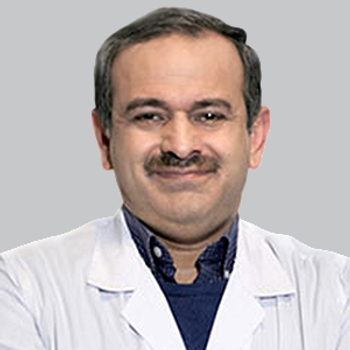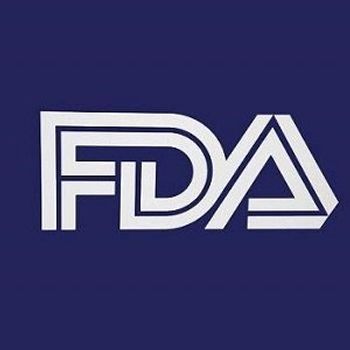
Advancing DM1 and DMD Care: Insights on DYNE-101 and DYNE-251 Development
Doug Kerr, MD, PhD, chief medical officer at Dyne Therapeutics, discusses the clinical development of DYNE-101 for myotonic dystrophy type 1 and DYNE-251 for Duchenne muscular dystrophy.
Therapeutic development in myotonic dystrophy type 1 (DM1) and Duchenne muscular dystrophy (DMD) has been hindered by longstanding challenges in delivering oligonucleotide therapies into skeletal muscle, cardiac tissue, and the central nervous system. Although several experimental approaches have progressed in recent years, limitations in tissue penetration have restricted the effectiveness of earlier antisense and gene-targeted strategies.
Dyne Therapeutics developed the FORCE platform to address this problem through targeted, receptor-mediated delivery, allowing genetic payloads to reach the scale of muscle involvement seen in these disorders. Early signals across strength, myotonia, timed functional measures, and central nervous system features have drawn renewed attention to this platform and its clinical relevance.
Dyne is now advancing two lead candidates, DYNE-101 (or zeleciment-basivarsen) for DM1 and DYNE-251 (zeleciment rosturdirsen) for exon 51 amenable DMD, through studies that include dose-expansion cohorts capable of informing potential accelerated approval submissions. In this Q&A,
NeurologyLive®: Provide an overview of DYNE-101 and its mechanism of action, why could be successful for myotonic dystrophy type 1?
Doug Kerr, MD, PhD: Let me start by briefly introducing myself. I’m a neurologist and a neuroscientist, and I’ve taken care of patients with both DM1 and DMD throughout my career. I spent many years in academic neurology treating these patients, watching them get worse, lose function, lose the ability to walk, transition to a wheelchair, and, in some cases, die. It has been a major focus of my career to develop therapies that change the course of these diseases.
That mission is really why Dyne was created—to solve one of the most important challenges in neuromuscular disease, which is delivering genetic payloads to the relevant tissues at the scale needed to produce meaningful therapeutic benefit. Our belief, and the belief across the field, is that oligonucleotide therapies can treat these diseases if we can deliver them to literally billions of muscle and CNS cells. We think we are finally doing that.
The FORCE platform is the mechanism that enables delivery of that genetic payload. For decades, we’ve tried to get payloads into muscle in neuromuscular diseases, and it has been extremely difficult. Dyne’s next-generation platform uses a Fab fragment of an antibody that binds to transferrin receptor 1, allowing the antisense oligonucleotide to enter skeletal, cardiac, and smooth muscle, as well as the CNS.
In DM1, the payload must reach the nucleus, which the FORCE platform allows. The goal is to impact splicing, which is the core pathobiology of myotonic dystrophy. Missplicing occurs in virtually every organ, including the CNS, skeletal muscle, and the heart, and correcting that process is essential for functional improvement. That’s what we’ve been seeing so far.
We completed our preclinical studies and are now deeply involved in clinical studies. We’re very excited about what we’re seeing across multiple endpoints—including myotonia, strength, timed function tests, and even CNS outcomes—and I'm happy to talk about those further.
Can you discuss the new clinical data you’ve generated for DYNE-101, including the one-year data presented at WMS 2025?
What’s really important about the data we presented at World Muscle Society is the breadth of impact with z-basivarsen. We’ve shown functional improvement through 12 months across multiple clinical measures, including myotonia, muscle strength, and timed functional tests.
We’ve also linked those improvements to meaningfulness—meaning whether patients feel and function better, and whether clinicians can perceive improvement. The data clearly show they do. Patients report improvements in daily function, and clinicians consistently perceive benefit. That meaningfulness component is extremely important to us.
Describe the ACHIEVE study design, what types of questions will this trial hope to answer?
ACHIEVE is a global, randomized, placebo-controlled, double-blind clinical trial assessing the safety, tolerability, and efficacy of z-basivarsen—formerly DYNE-101—in patients with DM1. We began with multiple ascending-dose cohorts to establish the right dose and regimen. We observed evidence of improvement across multiple measures, which enabled us to lock in the appropriate dose and move into a larger dose-expansion cohort.
That cohort includes 60 patients, and we believe it, along with the rest of ACHIEVE, could support a potential accelerated approval submission. That said, a phase 3 clinical trial will still be needed to fully unlock the therapy's value, and that’s planned to begin in Q1 of next year. The primary endpoint is change from baseline in myotonia, measured by the video hand-opening time (VHOT) at six months versus placebo. But the data we've shown demonstrate early and sustained improvement across multiple measures at six and twelve months.
One key feature of the FORCE platform is its ability to reach the CNS. Not all receptor-mediated uptake strategies do. CNS involvement in DM1—excessive daytime sleepiness, cognitive fatigue, slowed processing—is clinically significant. In ACHIEVE, using the MDHI, we assessed CNS manifestations, and results show improvement across cognition, fatigue, sleepiness, task processing, and related measures at the go-forward dose.
Strength is also critical. In ACHIEVE, we observed improvement in strength at six months and an unprecedented ~20% improvement at 12 months. That correlates with time-function tests, independence, and overall daily function. All these measures heading in the right direction is why we’re so excited about the drug, the platform, and the potential to deliver transformative therapies for patients with myotonic dystrophy.
Switching to DYNE-251, can you provide an overview of this therapeutic, its mechanism of action, and how it differs from what’s currently available?
In Duchenne muscular dystrophy, the genetic mutation disrupts dystrophin production, leading to absent or dysfunctional dystrophin. Using the same Fab-TFR1 approach as in DM1, DYNE-251 delivers an exon-skipping antisense oligonucleotide directly into skeletal, smooth, cardiac muscle—and, importantly, the CNS.
One thing we've learned in DMD is that "naked" ASOs, like PMOs, do not reach tissue effectively. That lack of delivery has been a major limitation of exon-skipping approaches historically, which is why the FORCE platform is so important here. Zeleciment rosturdirsen facilitates exon 51 skipping, allowing the machinery to bypass the mutation and produce a nearly full-length, highly functional dystrophin protein. That is very different from gene therapies, which deliver a much smaller micro-dystrophin construct.
For decades, the field has focused heavily on dystrophin restoration—and while dystrophin is essential, what excites us even more is that the increase in dystrophin with DYNE-251 is translating into real functional improvement. We're not just talking about slowing decline—we’re seeing improvement from baseline in strength, speed, and independence.
Our dose-expansion cohort is fully enrolled, and the full dataset will read out by the end of the year. We believe it may support accelerated approval, with dystrophin change from baseline serving as the key regulatory endpoint. A larger phase 3 study will follow to confirm long-term clinical benefit.
Can you provide more insight into the DELIVER trial and how it supports a future accelerated approval submission for DYNE-251?
DELIVER, like ACHIEVE, started with multiple ascending doses to identify the optimal dose and regimen. We observed sustained functional improvement at 10 mg/kg and at our go-forward dose of 20 mg/kg every four weeks. What was interesting is that the 10 mg/kg cohort was younger and healthier, and they showed improvement—but so did the older, slower, more disabled 20 mg/kg cohort. That suggests broad applicability across the exon-51–amenable DMD population.
This led to the dose-expansion cohort of 32 patients randomized 3:1, with a six-month readout focused on dystrophin change from baseline. That biomarker will serve as the foundation for accelerated approval when we review the data this fall. The results so far make us very optimistic.
Transcript edited for clarity.
Newsletter
Keep your finger on the pulse of neurology—subscribe to NeurologyLive for expert interviews, new data, and breakthrough treatment updates.





































